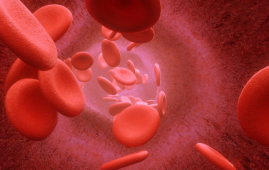

Based on findings from mice and human cells, researchers at Johns Hopkins University School of Medicine found that newly designed peptide therapy – AMPK-targeting peptides Pa496h and Pa496m may improve mitochondrial dynamics and high blood glucose levels in people with diabetes, obesity, and age-related metabolic disorders.
Reduced mitochondrial activity contributes to the accumulation of harmful biochemicals and can lead to weight gain. Obesity is projected to impact four out of every ten persons in the United States, and it is a major risk factor for type 2 diabetes. Childhood obesity, which is typically an early predictor of metabolic illnesses such as diabetes in adulthood, is predicted to affect 1 in 5 Americans between the ages of 2 and 19.
Disturbances and diseases of mitochondria, the cellular powerhouses also responsible for nutrient consumption and breakdown, have long been a target of medicinal efforts to prevent, delay, or reverse reductions in healthy mitochondrial populations.
The researchers explain that mitochondria in all animals constantly perform fusion and fission – combining and splitting — the activities required to sustain a healthy cell population. Elongated mitochondria are a hallmark of aging and obesity, and they can decrease activity and general function. Until now, the researchers say, there hasn’t been a straightforward approach to drive mitochondrial fission without causing substantial mitochondrial damage and a decrease in nutrition metabolism.
They were successful in developing two AMPK-targeting peptides, Pa496h and Pa496m. Both are involved in the activation of AMPK, the master regulator of cellular metabolism, by inhibiting the negative phosphorylation (the attachment of a phosphate group to a molecule) of AMPK at serine 496. Following that, activated AMPK upregulates a signaling pathway to induce mitochondrial fission, a process that fractures the huge mitochondria (megamitochondria) prevalent in diabetes, obesity, and age-related metabolic diseases, and then drives the elimination of damaged mitochondria after mitochondrial fission. These actions of Pa496h and Pa496m can result in a healthy mitochondrial population as well as improved mitochondrial metabolism and function.
These targeting peptides can also prevent the accumulation of hazardous chemicals, such as reactive oxygen species, which are detrimental to cells.
In the peptide therapy, These targeted peptides can block excessive glucose production in liver hepatocytes, the main source of elevated blood glucose levels in obesity and diabetes, in obese animal models and in hepatocytes (main functional cells of the liver) from obese humans.
“Our experiments show our targeting peptides can not only enhance and restore mitochondrial function, but also improve their high blood glucose levels, potentially making it particularly valuable for elderly individuals struggling with obesity and diabetes by lowering blood sugar levels,” says Ling He, an associate professor in the departments of pediatrics and
The researchers’ goal is to prevent weight gain and combat obesity in both children and adults by stimulating mitochondrial fission with the novel peptides. Future research will concentrate on the use of Pa496h and Pa496m peptides to promote mitochondrial fission in brown fat (or brown adipose tissue, is a type of body fat that regulates your body temperature in cold conditions), specifically to increase mitochondrial number, activity, and metabolism, and thus to burn more nutrients and control weight gain in obesity.
These studies were funded by the National Institutes of Health, and there are no conflicts of interest to disclose.
This technology is available for licensing and corporate partnerships.
more recommended stories
 OCTA Predicts Faster Visual Field Loss
OCTA Predicts Faster Visual Field LossOptical coherence tomography angiography (OCTA) has.
 Greater Ultra-Processed Food Intake Tied to Higher Mortality Risk
Greater Ultra-Processed Food Intake Tied to Higher Mortality RiskIn a recent publication in BMJ,.
 Cannabis & Nicotine in Pregnancy: Infant Mortality Risk
Cannabis & Nicotine in Pregnancy: Infant Mortality RiskThe combined hazards of consuming both.
 Endothelial Cells Identified for Potential Blood Vessel Repair
Endothelial Cells Identified for Potential Blood Vessel RepairEndothelial Cells Hold Promise for Blood.
 Red, Processed Meat Linked to Severe Kidney Damage in Diabetic Women
Red, Processed Meat Linked to Severe Kidney Damage in Diabetic WomenIn a recent investigation disclosed in.
 Cardiac Micro-Vessels: A Novel Imaging Approach
Cardiac Micro-Vessels: A Novel Imaging ApproachUndiagnosed chest pain and heart problems.
 Osteoarthritis Cause: Vitamin E Levels Not Linked
Osteoarthritis Cause: Vitamin E Levels Not LinkedA recent study published in Scientific.
 Comparing Cancer Risk: Medically Assisted vs. Natural Conception
Comparing Cancer Risk: Medically Assisted vs. Natural ConceptionIn a recent JAMA Network Open.
 Brain Chemistry & Political Attitudes: Neural Switch Theory
Brain Chemistry & Political Attitudes: Neural Switch TheoryIn summary, a recent study uses.
 Immunosuppression Driver Found in Glioblastoma
Immunosuppression Driver Found in GlioblastomaFilippo Veglia, Ph.D., an assistant professor.

Leave a Comment